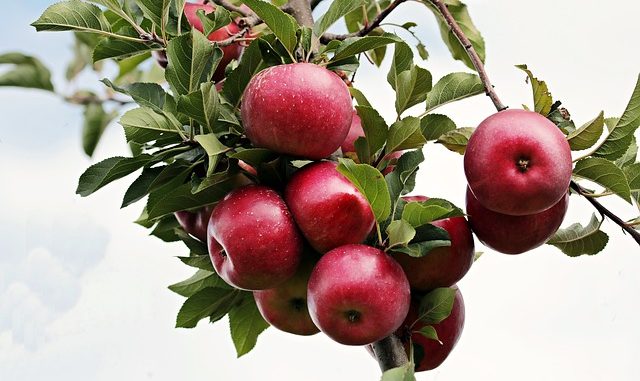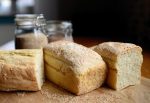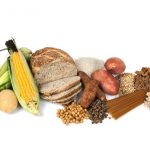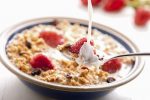
One of the wasted by-products from fruit processing is the pomace. This fruit pomace is made up of the skins, seeds and other small pieces of fruit that are left over after the juice has been pressed from it. Very often it contains very little material of any quality but of late there has been considerable interest in the dietary fibre if not the colourful polyphenols and anthocyanins (O’Shea et al., 2012).
Dietary fibre is defined as the ‘edible parts of plants or analogous carbohydrates that are resistant to digestion and absorption in the gut’. The value depends on the method of analysis but there is certainly material of value to be obtained from berry sources. Dietary fibre has valuable therapeutic implications for certain conditions such as diabetes, hyperlipidemia, and obesity. It could also ameliorate the effects of hypertension, coronary heart disease (CHD), cholesterol, colorectal and prostate cancers, and intestinal disorders.
Dietary fibre consists of a variety of non-starch polysaccharides which include cellulose, hemicellulose, pectin, b-glucans, gums, and lignin (Gallaher & Schneeman, 2001; Lamghari et al., 2000).
Specific Sources Of Fruit Pomace
Some researchers have looked at pomace in great detail as a source of fibre. Grapes have always been a great source of pomace given that so much is produced. At the Universitat de les Illes Balears in Palma, Mallorca, Spain, a research group has looked over many years at the dietary fibre and antioxidant value in various grape pomace and the stem (Llobera and Cañellas, 2007). In one example, Manto Negro grapes which are red grapes were examined because of the possible value in their pomace and stems following vinification which is juice processing. When you look at the dry matter, about three quarters of this is reckoned to be dietary fibre. The pomace is made up of protein (12 per cent), oil (13.5 per cent) and extractable phenols (12 per cent). In this study, the total dietary fibre was split into soluble dietary fibre (SDF), insoluble dietary fibre (IDF), uronic acids (UA) and Klason lignin (KL). There is plenty of material here for further dietary use.
The same might also be said of white grapes which the same authors evaluated with the Prensal Blanc grape variety (Llobera and Cañellas, 2008). The total dietary fibre contained 61 per cent insoluble fibre with just 10.3 per cent being the soluble fraction. A research group at Oregon State University has also examined dietary fibre and polyphenols from grape skins (Deng et al., 2011) produced from varieties grown in the state of Oregon, USA.
Orange pomace has been tested as a fibre in gluten-free bread (O’Shea et al., 2015) and mango peel too appears to offer some nutritional benefit (Ajila and Rao, 2013). Mango peel contains a range of total dietary fibre depending on how its been processed and which variety it is derived from. In that example, the main neutral sugars were galactose, glucose and arabinose. The bound phenolic content was in a range too of between 8.1 and 29.5 mg/g gallic acid equivalents. Apple peels offer substantial dietary fibre value (Figuerola et al., 2005; Sudha et al., 2007). It’s worth noting that other fibre materials can be sought from byproducts including brewers’ spent grain.
References
Ajila, C.M., Rao, U.J.S.P. (2013) Mango peel dietary fibre: Composition and associated bound phenolics. J. Functional Foods 5(1) pp. 444-450 (Article)
Deng, Q., Penner, M. H., & Zhao, Y. (2011). Chemical composition of dietary fiber and polyphenols of five different varieties of wine grape pomace skins. Food Research International, 44(9), pp. 2712-2720
Figuerola, F., Hurtado, M. L., Estévez, A. M., Chiffelle, I., & Asenjo, F. (2005). Fibre concentrates from apple pomace and citrus peel as potential fibre sources for food enrichment. Food Chemistry, 91(3), pp. 395-401.
Gallaher, D., & Schneeman, B.O. (2001). Dietary fiber. In: B. Bowman & R. Russel (Eds.). Present knowledge in nutrition (8th ed., 805p). Washington, DC: ILSI
Lamghari, R., Sanchez, C., El Boustani, E., MaucourT, N. M., Sauvaire, Y., Mejean, L., & Villaume, C. (2000). Comparison of effects of prickly pear (Opuntia ficus indica sp.) fruits, arabic gum and citrus pectin on viscosity and in vitro digestibility of casein. Journal of the Science of Food and Agriculture, 80, pp. 359–364
Llobera, A., & Cañellas, J. (2007). Dietary fibre content and antioxidant activity of Manto Negro red grape (Vitis vinifera): pomace and stem. Food chemistry, 101(2), pp. 659-666 (Article).
Llobera, A., & Cañellas, J. (2008). Antioxidant activity and dietary fibre of Prensal Blanc white grape (Vitis vinifera) by‐products. International Journal of Food Science & technology, 43(11), pp. 1953-1959 (Article).
O’Shea, N., Arendt, E. K., & Gallagher, E. (2012). Dietary fibre and phytochemical characteristics of fruit and vegetable by-products and their recent applications as novel ingredients in food products. Innovative Food Science & Emerging Technologies, 16, pp. 1-10 (Article)
Sudha, M. L., Baskaran, V., & Leelavathi, K. (2007). Apple pomace as a source of dietary fiber and polyphenols and its effect on the rheological characteristics and cake making. Food Chemistry, 104(2), pp. 686-692.



Leave a Reply